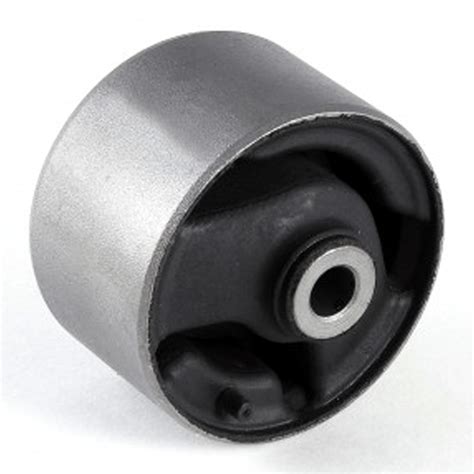Discover the importance of bushings and engine mounts, signs of wear, replacement tips, and benefits of upgrades for optimal vehicle performance.When it comes to vehicle performance and longevity, the significance of bushings and engine mounts cannot be overstated. These critical components play a vital role in supporting your engine, absorbing vibrations, and ensuring a smooth ride. However, like all parts subject to wear and tear, bushings and engine mounts can deteriorate over time, leading to various issues that can affect your vehicle’s performance and safety. In this blog post, we will explore what bushings and engine mounts are, how to identify the signs of wear, the impact on your vehicle, and the benefits of replacing or upgrading these components. Whether you are a car enthusiast or a daily commuter, understanding these key elements can help you maintain your vehicle in peak condition. Join us as we delve into the world of bushings and engine mounts!
What are bushings and engine mounts?
Bushings and engine mounts are crucial components in a vehicle’s suspension and engine systems, playing an integral role in ensuring a smooth and stable ride while minimizing vibrations and noise. Bushings are typically made from a combination of rubber and metal and are designed to absorb shock and provide flexibility within the vehicle’s suspension system, allowing for articulation between different parts such as control arms and the chassis.
On the other hand, engine mounts are specialized devices that secure the engine to the vehicle’s frame, preventing excessive movement while allowing for necessary flex and vibration absorption, thus contributing to overall vehicle stability and performance. Both bushings and engine mounts serve the essential function of reducing the transmission of engine and road vibrations into the cabin, significantly improving driver and passenger comfort.
Furthermore, it is important to note that the condition of these components directly affects the vehicle’s handling characteristics and ride quality; as they wear out over time, they can lead to poor alignment and handling issues, making it vital for vehicle owners to understand their significance and the necessity of regular inspections to maintain optimal performance.
Signs of worn bushings and engine mounts
When it comes to understanding the overall performance and safety of your vehicle, being aware of the signs of worn bushings and engine mounts is crucial, as these components are essential for maintaining proper alignment, reducing excess vibration, and supporting the weight of the engine and transmission.
One of the most noticeable indications that your bushings or engine mounts have become deteriorated is the presence of excessive vibrations felt through the steering wheel or the chassis, which can lead to an uncomfortable driving experience that may ultimately affect the handling and control of the vehicle, making it harder to steer and increasing the likelihood of further wear on other components. Additionally, visible cracks, fraying, or missing pieces in the bushings or engine mounts can be observed during routine inspections, signaling that they may no longer be effective in absorbing shocks and vibrations as they should, which can negatively impact the overall ride quality.
Another telltale sign of worn bushings and engine mounts is the occurrence of unusual noises, such as clunks or rattles, especially when accelerating, braking, or navigating over bumps, which suggests that the components that are meant to cushion and stabilize various parts of your vehicle are no longer functioning correctly. Furthermore, if you notice misalignment issues, such as uneven tire wear or the steering wheel being off-center, it could be a direct result of compromised bushings and engine mounts that are unable to maintain proper alignment and support, making it essential to address these issues promp
Impact of worn bushings and engine mounts
Worn bushings and engine mounts can significantly impact a vehicle’s overall performance, leading to a variety of adverse effects that not only affect driving comfort but can also elevate the risk of mechanical failure, which may incur additional repair costs and safety hazards. When these components degrade over time due to stress, exposure to various elements, and the inevitable wear and tear associated with regular use, they can become less effective at isolating vibrations and shocks, which means that vibrations from the engine and road surfaces are transmitted more intensely to the vehicle’s interior, making for a more uncomfortable and jittery ride.
Moreover, the failure of bushings and engine mounts can lead to misalignment of key engine components, which may result in further complications such as increased engine noise, harsh shifting when changing gears, and ultimately, the possibility of damaging surrounding components due to excessive movement caused by compromised mounts. This change in the structural integrity of these components can also lead to premature wear on parts like transmissions, control arms, and suspension systems, which may not only decrease the lifespan of these parts but also substantially increase maintenance costs.
In conclusion, attending to the condition of your vehicle’s bushings and engine mounts is crucial; if they are allowed to deteriorate without replacement, the repercussions may exacerbate other underlying issues in the vehicle, causing a ripple effect that leads to greater repair needs in the future, thus underscoring the importance of regular inspections and immediate attention to any signs of wear or damage to ensure the long-term health and functionality of your vehicle.
Replacing bushings and engine mounts
When it comes to maintaining the performance and safety of your vehicle, understanding the process of replacing bushings and engine mounts is crucial, as these components play a vital role in supporting the vehicle’s structure while absorbing vibrations and minimizing the impact of road irregularities.
The replacement of these essential parts typically involves a series of steps which include lifting the vehicle safely, removing any components that obstruct access to the bushings and engine mounts, such as the wheels and suspension parts, and then meticulously unbolting and replacing the worn or damaged units with new ones, ensuring that everything is reassembled correctly to avoid any potential mishaps while driving.
It is paramount to consider using quality replacement parts, preferably those that are designed for your specific vehicle model, as choosing the wrong components can lead to premature wear and tear, affecting the overall driving experience and possibly leading to more extensive repairs down the line.
Benefits of upgraded bushings and engine mounts
Upgrading your vehicle’s bushings and engine mounts can lead to a not only smoother ride but also improved handling, responsiveness, and overall vehicle performance, as these components are essential in supporting the engine and ensuring the proper alignment of various parts. By opting for higher-quality aftermarket components, drivers can experience less vibration and noise, which enhances driving comfort, particularly in vehicles that are frequently subjected to tough road conditions or performance driving environments.
Another significant advantage of upgrading your bushings and engine mounts lies in the potential for increased durability and longevity, as many aftermarket options are designed to withstand harsher conditions than factory-installed parts, which can lead to a reduction in maintenance costs over the lifespan of the vehicle. As a result, many automotive enthusiasts and performance-oriented drivers have begun to recognize that this investment not only pays off in terms of performance enhancement but also in the longevity of the vehicle’s overall drivetrain components, thereby making it a sound financial decision in the long run.
Moreover, improved bushings and engine mounts can also contribute to better alignment and stability of the vehicle, which can translate into enhanced safety during high-speed maneuvers or abrupt changes in direction, giving drivers an increased sense of confidence behind the wheel. This enhanced stability not only benefits everyday driving but also amplifies performance during competitive scenarios, such as autocross or track days, underscoring why many car enthusiasts prioritize these upgrades as essential components in their pursuit of optimal driving experience.
Frequently Asked Questions
What are engine mounts and why are they important?
Engine mounts are crucial components in a vehicle that secure the engine to the chassis. They help to absorb vibrations and maintain proper alignment, ensuring a smooth performance and reducing noise.
How do bushings relate to engine mounts?
Bushings are often integrated within engine mounts or used in conjunction with them to provide additional cushioning and support. They help to further minimize vibrations and allow for controlled movement of the engine.
What are the signs that my engine mounts may need replacement?
Common signs include excessive engine vibrations, engine misalignment, unusual engine noise, or the engine feeling like it’s moving excessively during acceleration or braking.
Are there different types of engine mounts?
Yes, there are several types of engine mounts including hydraulic, solid, and rubber mounts. Each type has its benefits and is suited for different vehicle applications.
Can worn engine mounts affect vehicle performance?
Absolutely. Worn engine mounts can lead to increased vibration, affecting ride quality, and can also lead to excessive movement of the engine, which may impact other components and systems.
How often should engine mounts be inspected?
It is a good practice to inspect engine mounts during routine vehicle maintenance, typically every 30,000 miles or as recommended by the vehicle manufacturer.
What materials are commonly used in the manufacturing of engine mounts?
Engine mounts are typically made from rubber, polyurethane, or a combination of both. Some high-performance mounts may utilize metals or advanced composites for added stiffness and durability.





